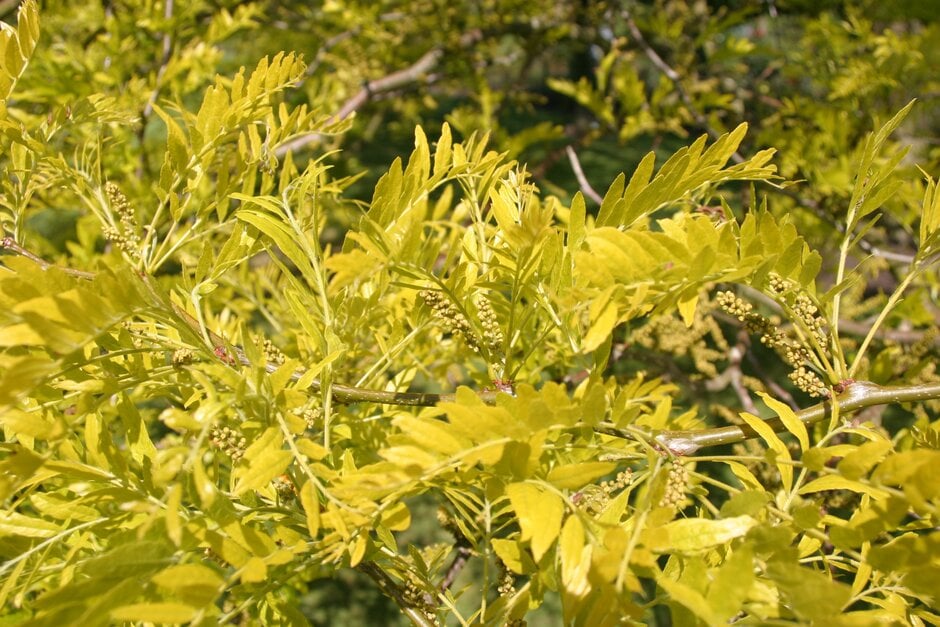Top trees - RHS Garden Curators pick their favourites
We asked the RHS Garden Curators to choose their favourite trees. In a changing climate they give us their top five, some for resilience, others for colour or conditions
I think that I shall never see
(Trees by Joyce Kilmer)
A poem lovely as a tree
Robert Brett at RHS Garden Hyde Hall, Essex
Fraxinus angustifolia ‘Raywood’ (ash)
Located by the lake, it comes into its own in autumn, when it turns a beautiful wine red; spectacular against a sunlit blue sky. Sadly, due to ash dieback in the area, this may not be a tree for the future – all the more reason to enjoy it now.
Ulmus parvifolia ‘Frosty’ (Chinese elm)
Robert’s choice for climate resilience in the South East:
Ginkgo biloba (maidenhair tree)
Described as a ‘living fossil’, this tree has shown resilience for millions of years. It is pollution-tolerant, and captures and stores carbon. There are many cultivars now, but Ginkgo biloba ‘Fasitgiata Blagon’ is worth noting as it has intense yellow leaves in autumn.
A wonderful tree for its evergreen foliage, tolerance of drought and magnificent trunks as it ages. Sadly, xylella disease has caused many trees in Europe to die, so only purchase UK-grown plants. Olives help clean the air and due to their longevity, also help with carbon sequestration. Olive groves are known to serve as significant carbon sinks.
Quercus texana ‘New Madrid’ (Texas red oak)
Matt Pottage, former Curator at RHS Garden Wisley, Surrey
Araucaria araucana (monkey puzzle)
Chamaecyparis lawsoniana ‘Intertexta Pendula’ (Lawson’s cypress)
A complete oddity from the Victorian period, this weeping Lawson’s cypress looks like an enormous upturned cabbage! A real curiosity, which of course makes a brilliant den for adventurous children. Very rare in gardens and cultivation, the best examples can be found in the grounds of Bishop Burton College, York.
Liriodendron ‘Chapel Hill’ (tulip tree)
Magnolia ‘Felix Jury’
When I first met this cultivar, it looked like someone had plucked giant, deep purple, waterlily flowers and stuck them to a naked,
This
Five climate resilient trees from Paul Cook, Curator at RHS Garden Harlow Carr, Yorkshire
Malus ‘Evereste’ (crab apple)
Acer griseum (paperbark maple)
Has the best winter bark and is ideal for smaller gardens as it doesn’t get out of hand. At Harlow Carr, it is underplanted with Veronica ochracea ‘James Stirling’ for a striking combination.
Milder winters mean this cherry flowers when the weather is good through late autumn and winter. Its light foliage provides autumn colour in a loose and airy canopy.
Hoheria sexstylosa ‘Stardust’ (ribbonwood)
A selection named by Roy Lancaster, its side growth can be trimmed to form a small tree. It stays evergreen in mild winters and its flowers are attractive to bees.
A conifer with autumn colour, this golden form of dawn redwood does get big but can be kept in check (dwarfing cultivars are available).
Hundreds of trees are being planted at Harlow Carr this autumn in a bid to boost the garden’s wow-factor and showcase species resilient to climate change. Harlow Carr stands on the grounds of the ancient Forest of Knaresborough in North Yorkshire and new Quercus cultivars are being planted this year as part of RHS efforts to preserve this historic oak woodland.
Marcus Chilton-Jones, Curator at RHS Garden Bridgewater, Greater Manchester
Liquidambar styraciflua ‘Worplesdon’ (sweet gum)
Phillyrea latifolia (green olive)
A medium to small tree, growing to around 8m. It can be clipped if desired and maintained to a smaller scale. Evergreen and a good choice for both urban and coastal locations. Prefers a free-draining soil.
A small tree, variable in height but averaging around 6m, with a similar spread. It has lovely, 5cm diameter, pure white blossom in spring, followed by interesting edible fruits in mid-autumn. Good for pollinators.
Quercus ilex (holm oak)
A large evergreen, sometimes reaching more than 20m in height. A good potential long-term choice for climate change, especially for ‘drier’ conditions and free-draining soils. i.e. will tolerate summer drought.
A fast-growing medium-sized tree up to 12m with a potentially equal spread. Corymbs of pretty, scented white flowers in summer, which attract bees (as the common name suggests). Also attracts butterflies – a good tree to benefit biodiversity in your garden.
Jonathan Webster, Curator at RHS Garden Rosemoor, Devon
Prunus ‘Jō-nioi’ (cherry)
Liquidambar acalycina ‘Spinners’ (Chang’s sweet gum)
Originating from China, this is less widely grown than its American cousin. It is visibly different, with just three lobes to the beautiful leaves, compared with five of Liquidambar styraciflua. This tree was selected due to its dark and rich autumn colour with the leaves holding on the tree into December. It was named by the late great plantsman, Peter Chappell, after his garden Spinners, in Hampshire.
Malus baccata (Siberian crab)
Commonly known as the Siberian crab, this amazing tree is covered in red fruits in autumn, creating a wonderful spectacle but also a hive of activity for wildlife. The small fruits are loved by birds but are in abundance, so you might be able to harvest a few, as they are delicious. This tree is very cold tolerant and more decorative than just the fruit. White blossom covers the tree in spring and as the yellow autumn colour falls, the red fruit are revealed.
This tulip tree is upright in growth, with a beautiful white edge to the leaf. This bright white stays sharp all year and makes the tree stand out in the landscape. I am not a great fan of variegated plants but this has real class and is well worth growing. It may be a good tree in the South West for climate change; we have planted the species in some of our outer woodlands as an experiment.


